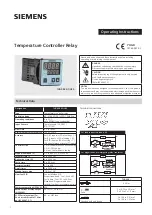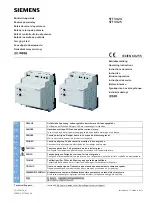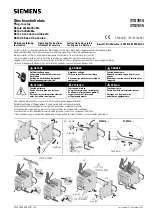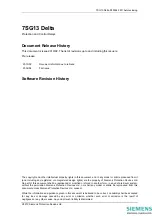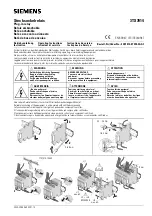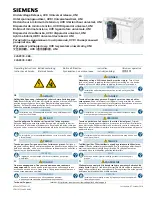
Type D-3 Direct Current Relay
41-151.1H
3
* Other ranges can also be supplied
.
As shown in the above Table, the D-3 relay is avail-
able with a “left zero,” “suppressed zero” and “center
zero” scale. In the “left zero” and the “suppressed
zero” relays the moving contact is located in the
extreme left hand position of the scale when the
relays are deenergized. The “suppressed zero” relay
is held in this position with considerable more force
than the “left zero” relay. When the relays are ener-
gized with voltages of the proper magnitude and
polarity, the moving contact moves to the right.
In the “center zero” relay, the moving contact is
located in the center of the scale when the relay is
deenergized. When the relay is energized, the con-
tact will move either to the right or left depending
upon the polarity of the applied voltage.
A modification of the D-3 relay, in which a rectifier is
mounted internally, makes it suitable for ac opera-
tion. Full scale deflection can be obtained with 6 milli-
amperes ac Relays modified for AC volts can also be
supplied.
The relay has a slight time-delay, with inverse char-
acteristics. In the usual application the moving coil
terminals are connected across a shunt, and this
results in longer delay for both operating and reset
times. When a shunt is used the operating time for
full scale travel at 125% of the full scale operating
current is about 4 seconds, while at 1000% it is about
.25 second. In applications where no shunt is used,
the operating times for the same conditions are about
1.25 and .15 second respectively. When the relay is
deenergized, the time required for it to reset from the
full scale position to the 10% position is approxi-
MOVING COIL CIRCUIT
Ranges in
Millivolts, dc
Average
Resistance in Ohms at 25°C
0-10
5-0-5
40-80
100-0-100
0-200
0.3
0.3
1.2
6.0
6.0
Figure 3: External Schematic Diagram for Overload or Re-
verse Current Protection, using the Type D-3 Re-
lay.
Figure 4: External Schematic Diagram for Overload Protec-
tion where Trip Currents in Excess of One Ampere
Rating Require Use of an Auxiliary Relay.
183A342
183A343
















